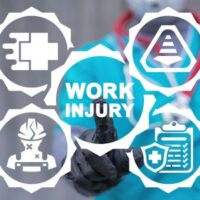Top Causes of Maintenance and Repair Worker Injuries

Maintenance and repair workers are grouped together in the US Bureau of Labor Statistics (BLS) “occupational outlook handbook,” which provides details about various professions within a range of industries, including common work duties, pay scales, work environment, hazards, and more. Generally speaking, the BLS reports that maintenance and repair workers “fix and maintain machines, mechanical equipment, and buildings,” and they are routinely tasked with jobs that include painting, flooring repair, plumbing repair, electrical services, and installation and maintenance of air conditions and heating systems. Work in maintenance and repair can be varied depending on the structure and specific type of role. In addition, as the BLS explains, maintenance and repair workers — despite being more general workers — often need to have specialized skills, but also must be able to recognize when expert attention is necessary for a particular task.
Given that maintenance and repair jobs often involve so many different tasks, workers can be injured in various ways due to a wide range of hazards. The following are some of the top causes of maintenance and repair workers injuries in Maryland and across the country.
Cuts, Lacerations, and Puncture Wounds
Maintenance and repair workers frequently must use hand and power tools, including screwdrivers, saws, hammers, and nail guns to complete tasks. All of these tools, and more, pose injury risks that can result in cuts, lacerations, and puncture wounds. In addition, maintenance and repair workers frequently must fix equipment or machinery in the businesses where they work, and any work with machinery can pose risks of cuts and lacerations, as well as traumatic amputations in some circumstances.
Sprains, Strains, and Other Musculoskeletal Injuries
Repeated requirements for heavy lifting and related tasks often result in musculoskeletal injuries that occur in a single accident or over time.
Falls from Heights, or Falls to a Lower Level
Maintenance and repair workers are frequently on ladders performing repairs, and they can even be required to perform jobs on roofs in some cases. Accordingly, falls from ladders, and falls from heights or to lower levels, happen with some frequency and can result in devastating injuries such as traumatic brain injuries (TBIs) and broken bones.
Slips, Trips, and Falls
Slips, trips, and falls — or same-level falls — are also common for maintenance and repair workers, who are frequently walking to and from job tasks in areas that may be cluttered or where flooring hazards pose slipping or tripping risks.
Electrical Injuries and Burns
Given that maintenance and repair workers are frequently tasked with minor electrical jobs, they can be exposed to electrical currents that can cause electrical injuries and/or burns. Repair and maintenance workers can also suffer burn injuries due to exposure to certain chemicals.
Contact a Maryland Maintenance and Repair Worker Injury Lawyer
Anyone who has been injured while performing maintenance or repair work should find out about their eligibility for workers’ compensation benefits and should begin the process of filing a workers’ compensation claim. In general, to be eligible for workers’ compensation benefits, the injured employee must have sustained an “accidental personal injury while working,” and that injury must have “arisen out of and in the course of employment,” according to the Maryland Workers’ Compensation Commission. It is essential to get in touch with one of the experienced Maryland maintenance worker injury lawyers at the Law Offices of Steinhardt, Siskind and Lieberman, LLC to have your case assessed and to begin the process of seeking workers’ compensation benefits.
Sources:
bls.gov/ooh/installation-maintenance-and-repair/general-maintenance-and-repair-workers.htm
wcc.state.md.us/Gen_Info/FAQ_Employees.html


